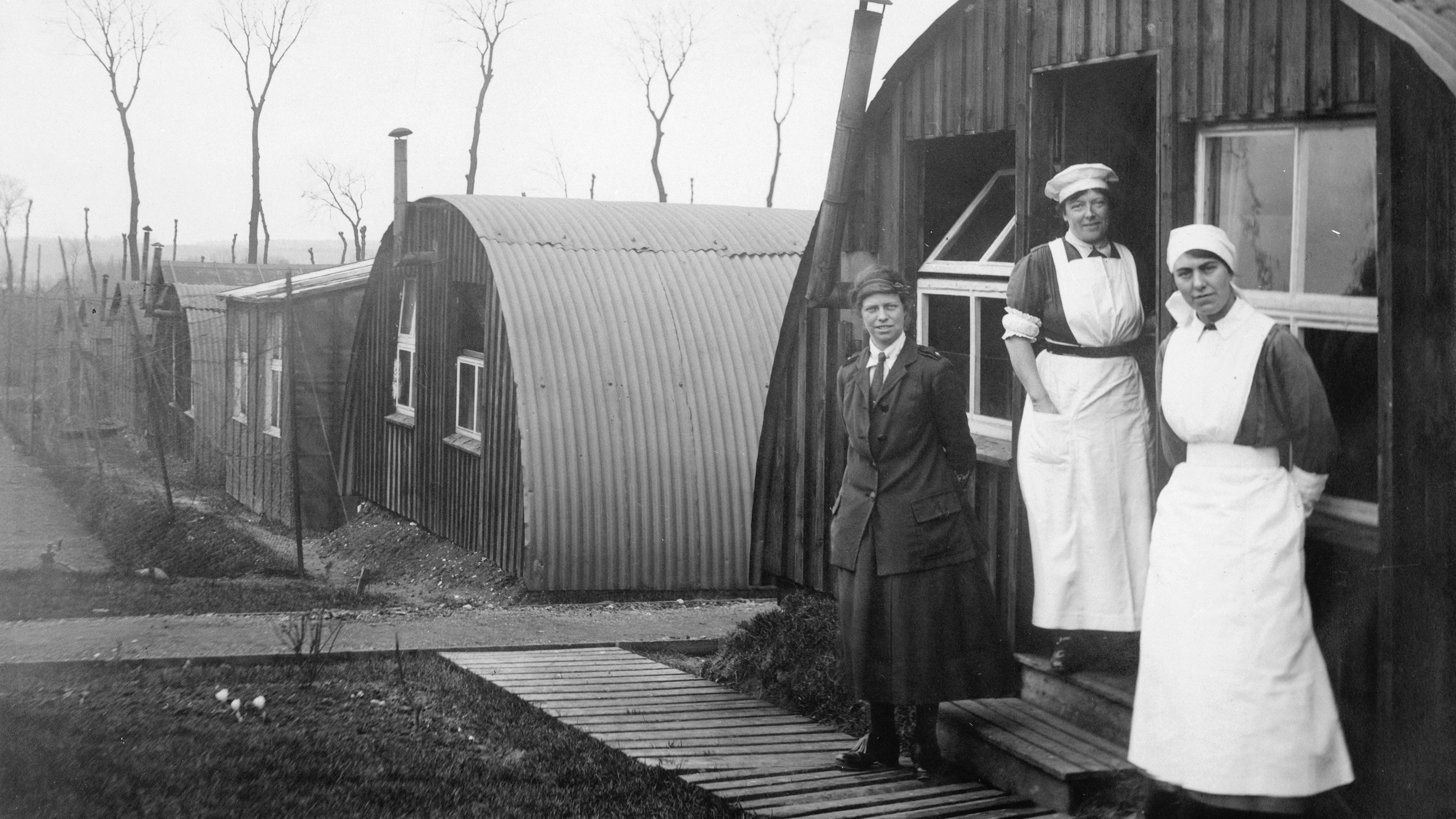As the status of women becomes even more paramount, particularly within the creative industries, the present touring exhibition at Impressions Gallery in Bradford arrived at the appropriate time. No Man’s Land is a unique and rare glimpse into the First World War from the female perspective. The exhibition offers photographic snapshots from the women who experienced the war firsthand, juxtaposed alongside work by contemporary female artists inspired by the conflict.
Like most people, I have only ever experienced WW1 through the eyes of the men who faced the battle. As a female photographer myself I was instantly captivated by the concept and nature of the work. Especially as I was unaware of how significant the roles of the women were; for example, Olive Edis (1876-1955), who is thought to be the first female photographer sent to a war zone, which even today is a position dominated by men. As I viewed her images documenting the ‘invaluable contributions’ of women in the British Auxiliary Services, I wondered how she would react to seeing how her work has become a small part in demonstrating the progression of women’s equality, considering at the time “she felt very pleased that a woman should get that chance [to photograph] on the fighting line”.
No Man’s Land is an opportunity to re-imagine the history of our past in light of our tumultuous present.
Throughout the exhibit I was struck by the honest reality of the images, and the ways in which scenes of tragedy were softened by glimpses of everyday life and humour. Profound achievements of the women, and the essence of their photographs were brought to life with the inclusion of their personal items and published work on display. I was overwhelmed with admiration for them and their courage, boldly facing adversity, and consequently I could understand the significance of their position and the necessity to document such a detrimental period of history. They broke the rules of the female stereotype and defied the supremacy of the establishment.
I found the way historical images were displayed to be intimate yet fluid; the smaller scale prints forcing me to move in closer, making the experience more profound as I noticed the minute details. This work was counter-balanced by the large-scale images by the contemporary artists. These pieces offer a refreshing interval to the traditional black and white photography that you would expect to see. I was particularly stunned by Chloe Dewe Matthews’ project, Shot By Dawn, as at first the photographs seem to be just unremarkable yet eerie landscapes. However, once I realised the intention of the work, I was immediately confounded. I felt as though the gallery had slipped away and I was trespassing in places that may now belong within the modern world, but would always be engrained in the traumatic events of the past. Places where men lost their lives without honour because they couldn’t bear to lose them fighting a war. I found these photographs to be the most fervent, even in respect of those taken at the time, due to the unassuming yet profound connotations that grab you by the heart.

05.50 / 10.4.1918
Klijtebeek stream, Dikkebus, Ieper, West-Vlaanderen (Chloe Dewe Mathews)
Impressions is a gallery that endeavours to change the way we think about photography, and through this most recent exhibition, how photography can make us think. Not only is the work significant in upholding the role of women within war and society, but it also opens our eyes further to the truly horrific realities of the First World War. No Man’s Land is an opportunity to re-imagine the history of our past in light of our tumultuous present. It is multi-faceted, offering unique interpretations of war through different forms of expression. If you are looking for an experience that not only feeds the mind but also the soul then this is the one for you.
Curated by Dr. Pippa Oldfield, No Man’s Land is a co-production by Impressions Gallery, The Turnpike, Bristol Cathedral and Bishop Auckland Town Hall. It is supported using public money from National Lottery Arts Council England Strategic Touring. No Man’s Land is exhibiting at Impressions Gallery, Bradford until 30th December.
Shot at Dawn is commissioned by the Ruskin School of Art at the University of Oxford as part of 14–18 NOW, WW1 Centenary Art Commissions.
Bianca Wallis-Salmon
(Image: Olive Edis, Commandant Johnson and two other women of the General Service Voluntary Aid Detachment (VAD) Motor Convoy outside Nissen Huts, Abbeville, France, 1919. © IWM (Q 8036))

